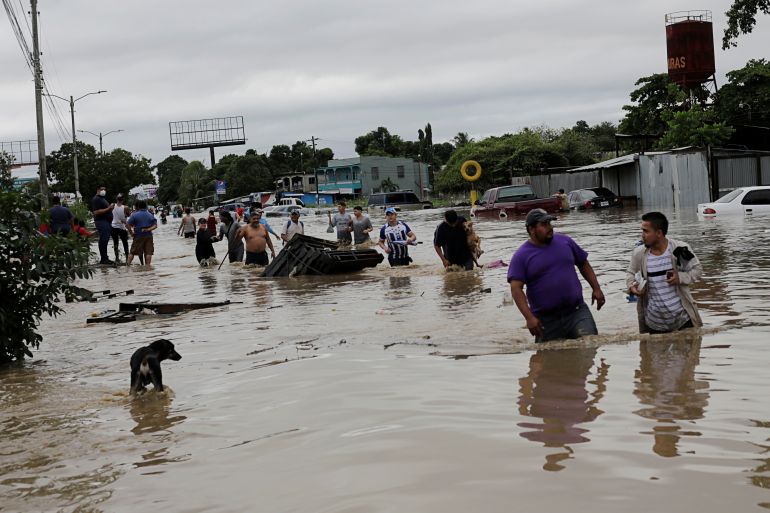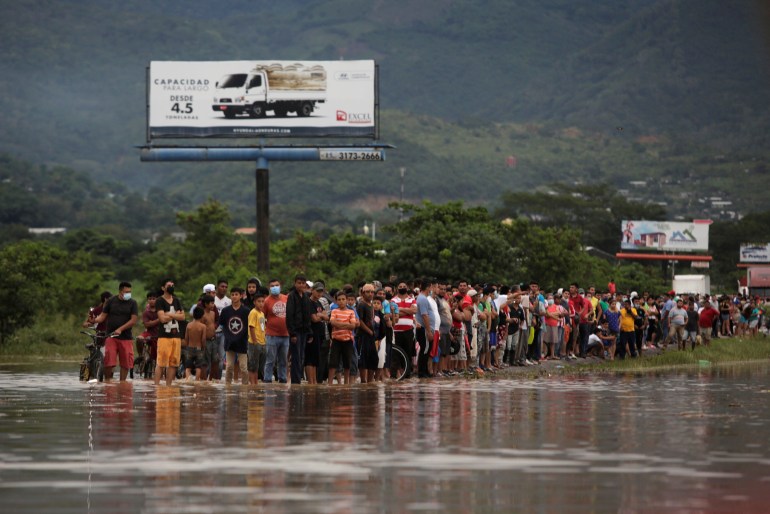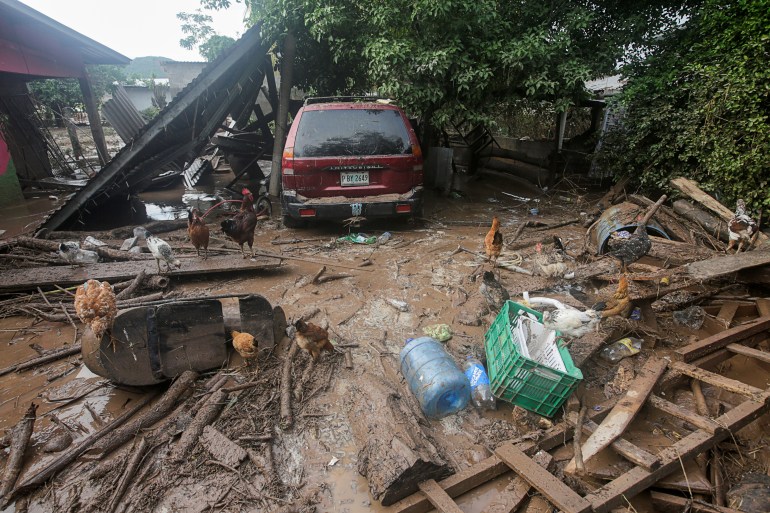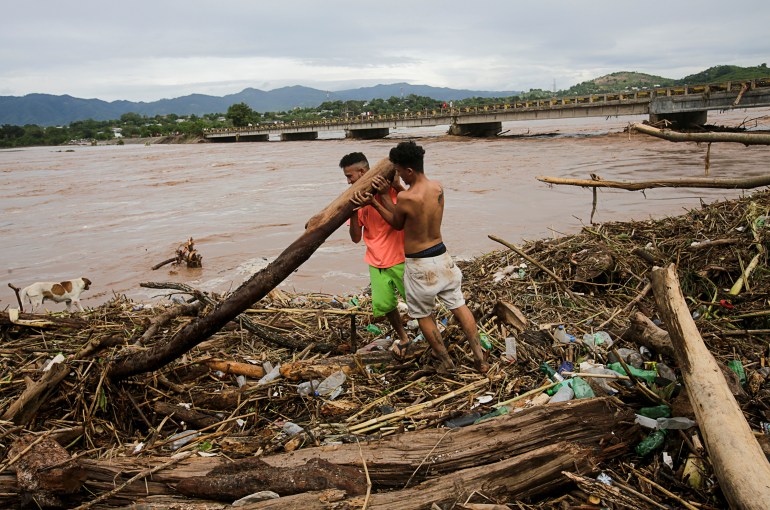Devastating Storm Eta leaves 150 dead or missing in Guatemala
Many of the dead were buried in their homes in a remote village, where about 150 houses had been swallowed by mudslides.

The death toll from the calamitous storm Eta in Central America has soared after the Guatemalan military reached a remote mountainous village where torrential rains had triggered devastating mudslides.
Guatemalan President Alejandro Giammattei said on Friday the number of dead and missing were estimated to total about 150.
Keep reading
list of 4 itemsBrazilian horse ‘Caramelo’ rescued after being trapped on roof by floods
Why is the US blocking some bomb shipments to Israel? All you need to know
Brazil flooding death toll hits 100 as government pledges aid
Many of the dead were buried in their homes in the remote Queja village in the central region of Alta Verapaz, where about 150 houses had been swallowed by mudslides, Guatemalan army spokesman Ruben Tellez told Reuters news agency, citing preliminary figures.
It appeared the area around Queja village had previously had a huge landslide on a road about 10 years ago, which killed dozens of people, Tellez added. “Now with all this [Eta] phenomenon it collapsed again,” Tellez said.
Giammattei said at a news conference soldiers had to cross a mountainous area on foot to reach the village.
“At this moment we calculate that, between the dead and those missing, non-official figures put it at more or less 150 dead, and we say non-official because we don’t have it totally confirmed,” the president said.

One of the fiercest storms to hit Central America in years, Eta on Friday dumped more torrential rain across large parts of Central America and the US National Hurricane Center (NHC) warned “catastrophic flooding” in the region would continue.
Rescue operations across Honduras and Guatemala have been slowed by destroyed roads and bridges, forcing authorities to draft in the military and use helicopters and speedboats to rescue people stranded on top of their houses.
Eta wrought chaos after ploughing into Nicaragua as a Category 4 hurricane on Tuesday with winds of 241 kilometres per hour (150 miles per hour), before weakening to a tropical depression and unleashing torrents of rain on regions of Honduras and Guatemala.
“This is the worst storm Honduras has seen in decades. The damage will undoubtedly be significant,” said Mark Connolly, UNICEF representative in Honduras, who estimated about 1.5 million children there will be affected by Eta.
Giammattei earlier added that bad weather was hampering rescue efforts, which were further limited by the country having only one helicopter for the job.
“We have a lot of people trapped [whom] we have not been able to reach,” he said.

A further eight people were killed in Honduras, where Max Gonzalez, the minister of the National Risk Management System (SINAGER), said about 4,000 people had been rescued but many others remained trapped on their roofs.
“We have been without food for two days … waiting to be evacuated,” William Santos, sheltering on top of a banana packing plant with about 300 people in northern Honduras, told Reuters.
Across swathes of Nicaragua, Honduras, Guatemala and Costa Rica, strong winds and heavy rain have damaged hundreds, if not thousands, of homes, forcing people to take cover in shelters.
Two artisanal miners were killed in Nicaragua, while in southern Costa Rica, a landslide killed two people in a house, a Costa Rican woman and a man from the United States, officials said.

Near the Costa Rican border in Panama’s Chiriqui province, five people, including three children, died in the flooding, authorities said.
On Friday morning, the eye of the storm was on the edge of Belize’s coast and heading out to the Caribbean Sea, charting a course to Cuba and Florida this weekend, the NHC said.
But remnants of Eta will continue to batter portions of Central America with “catastrophic, life-threatening flash flooding and river flooding”, the NHC said.
Flash flooding and river overflows were also possible across Jamaica, southeast Mexico, the Cayman Islands and western Cuba, it added.